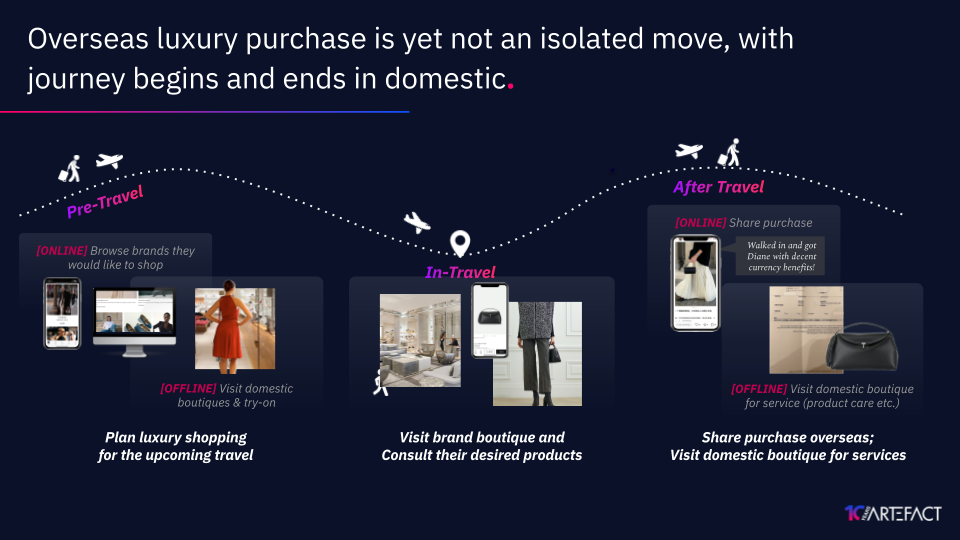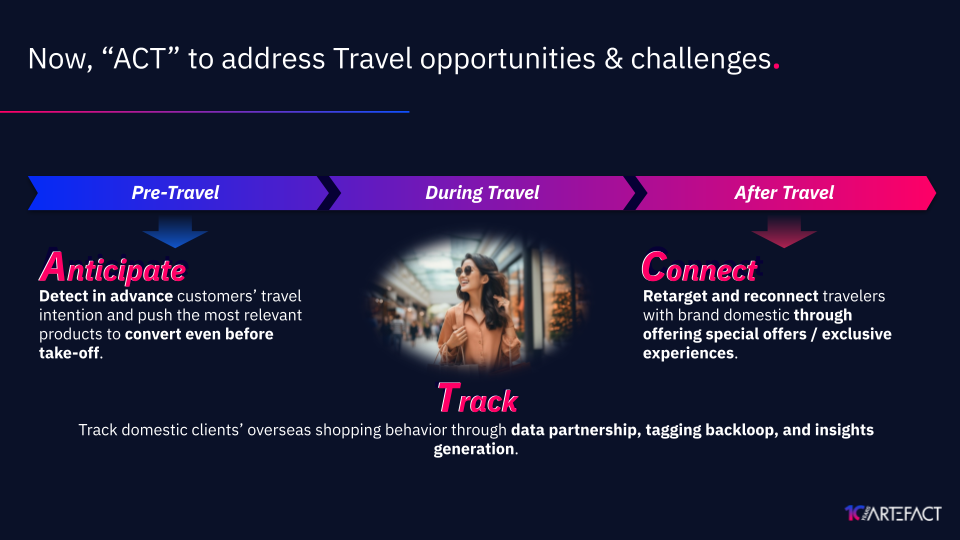The behavior of purchasing luxury goods abroad is not an isolated action. It forms a complete closed loop that spans geographical and temporal boundaries—from cultivating brand awareness in the domestic market, transitioning to overseas scenarios, to brand services and value continuity upon returning home. Each stage of this loop contains strategic opportunities for brands.

As a data expert deeply rooted in the luxury goods industry, Artefact believes that in order to seize opportunities within this closed loop, brands must confront three key challenges:
Opportunities and challenges coexist. Brands need comprehensive and precise strategies to empower consumers throughout their journeys, bridging key touchpoints both online and offline in domestic and overseas markets to capture high-value customers globally.
ACT: Innovative Omnichannel Strategy
Artefact partners with a third-party digital platform to help brands overcome challenges and unlock new growth opportunities through the “ACT” methodology (A – Anticipate, C – Connect, T – Track).

1. Anticipate
Seize key decision-making stages prior to travel by leveraging rich data insights from the third-party ecosystem to predict consumer demand. Through precise targeting, brands can embed themselves into consumers’ shopping lists.

2. Connect
Create a service closed loop with tailored homecoming experiences, integrating overseas and domestic, online and offline experiences.
– Post-Return Engagement: Trigger exclusive offers based on consumption records within the ecosystem after users return home (such as invitations for new product previews or complimentary care services), guiding them to offline boutiques to deepen their experiences.

3. Track
Ensure safe and compliant insights into overseas consumption behavior to optimize marketing decisions.

Conclusion
The “ACT” methodology has enabled top global luxury liquor brands to effectively reach Chinese consumers across 30+ touchpoints in Hong Kong, Macau, and overseas, guiding them to continuously explore the brand’s online and offline experiences upon returning home.
As consumer decision paths become increasingly fragmented, luxury brands must leverage strategic data capabilities to reshape customer journeys both domestically and internationally.
Please feel free to contact Kenn Liu or Shirley Li for further insights.

 BLOG
BLOG







